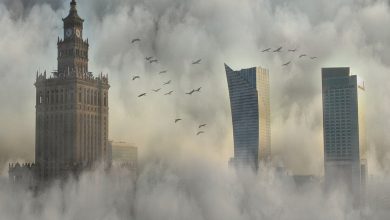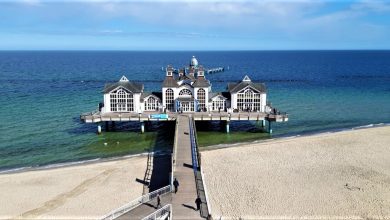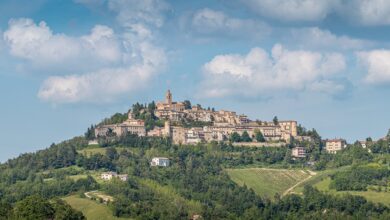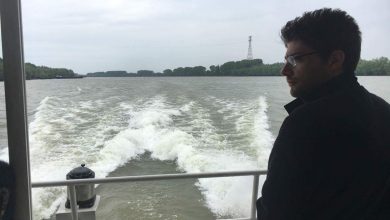Endless Solitude: an Account of Europe’s Most Remote Places

Imagine designing a postcard from Europe – which of those uncountable impressions would adorn your cover? Maybe fairy-tale castles, ancient amphitheatres and beauteous promenades? But why does one have to stick to the good, old platitudes? Even Europe’s most remote corners – whether a hidden mountain village in the South or a lonely island in the North – are part of our diversity. And, above all, they are equally charming.
Flying with Birds
Around 800 AD, the Norsemen conquered the Scottish island Foula, 20 miles west of mainland Shetland. Its name is Old Norse for “Bird island” – today it is a Site of Special Scientific Interest (SSSI) for its plants, birds and geology. During midsummer, a wide range of wildflowers adorn the island’s cliffs. Until nowadays, its Viking soul is alive and well: The tiny community of 30 inhabitants maintained the Norse folklore and live according to the old Julian calendar. Therefore, Yule is celebrated on January 6th. Foula’s sons and daughters primarily live from sheep and pony husbandry – far away from Brexit talks.

Floating with Ice
Colourful wooden houses embellish the panorama of the everlasting ice. With 484 km distance to the nearest town, Bolungarvík in Iceland, Ittoqqortoormiit is by far the most remote place in Greenland. It was founded in 1925, when families from West Greenland were relocated here. Dogsledding offers local transport for the approximately 350 inhabitants, while long-distance traffic is only available by plane and helicopter. Once a year, during the ice-free August, a supply ship brings goods from which the inhabitants live for the next 12 months. There is telecommunication, but no canalisation. The Greenlanders live castaway, but serene – far away from skyscrapers.

Wandering with Turtles
When jauntily touring around the Mediterranean, one might step over the Italian Isola di Linosa, which, together with Lampedusa and Lampione, is part of the Pelagie archipelago. Located between Malta and Tunis, the 5.4 square kilometre island is primarily characterized by its volcanic soil, black rocks, but diverse vegetation. Moreover, parts of the island were protected in 2002, as sea turtles lay their eggs on its beaches. For human tourists, it is forbidden to bring cars during the summer: the island’s silence needs to be maintained. The approximately 430 inhabitants live in the remote village of Linosa, on the southern coast – far away from traffic jams.

Hiking with a View
There it is – at a height of 2400 meters lies the small, tranquil, remote Ushguli. The Georgian village community in the middle of Upper Svaneti is the highest-situated in Europe. Ushguli consist of four constituent villages. They are home to about 200 people and notorious for its ancient defence towers, which are typical of the Svaneti region. The region is covered in snow for six months of the year, which often makes the road to the regional capital of Mestia impassable. However, an increasing number of individual adventurers are attracted by its archaic character – far away from packed beaches.

Residing with Serenity
Far across the deep blue Atlantic, the map depicts a tiny, green drop: Corvo, the smallest of the nine islands of the Azores. Discovered by the Portuguese explorer Diogo Teive in 1452, its settlement did not start until the 16th century. Due to their remote location, the approximately 400 inhabitants maintained a unique dialect, which contains archaic Portuguese words. As a result of a lacking natural seaport, its residents started cultivating especially corn and cabbage. The only village, Vila Nova do Corvo, is known for its houses built from black stone, its white facades and narrow alleys. Moreover, the use of wooded locks on the doors symbolizes peace and sense of community – far away from intruders.

Sharing with Skolts
Only a stone’s throw away from the Arctic Ocean and Norwegian border, we find the Skolt Sámi village of Sevettijärvi in municipality of Inari, the final corner of Finnish Lapland. It is surrounded by hiking trails that wind through the untouched wilderness of Europe’s North. After the war, in 1949, it became home for around 50 families that had been evacuated from Petsamo. Today, it is one of the few places in the world where the Skolt language is still alive. Lovers of ancient cultures are welcome to visit the Heritage House and learn about the Sámi way of life – far away from overfilled metros.

Living with Ghosts
The film director Ilian Metev dedicated his graduation film at the National Film and Television School in London to his Bulgarian homeland: Concretely, to the mountain village Goleshovo in the municipality of Sandanski, located close to the border of northernmost Greece. Metev documents the serene life and ominous death of the almost extinct village. The predominantly elderly inhabitants lament the emigration of the younger generation to the cities. Only very arduous paths through beautiful mountains lead to the forgotten tranquillity of Goleshevo – far away from Sofia’s night life.





